Whales, Life and Death
Faine Loubser
I felt my feet slip through white, hot sand, as I walked down an expansive coastline. My footprints were the first to break the ground. I was totally alone, and I liked this feeling. Solitude in nature was something I craved. Perhaps it was the years I’d spent with my family alone in the Namib desert, or maybe it’s something intrinsic to my DNA, but for as long as I can remember, I have needed time to be alone in nature. It was a place for clarity. Despite this, I’d started to feel uncomfortable. I’d been walking for a few hours and the intensity of the summer heat, combined with the blinding, reflective sand made for harsh conditions. Alone in my thoughts, I fantasized about finding a tree, stringing up a hammock and sipping on an icy, lemon drink. But, something in the distance caught my attention. It was gleaming white, and had a smooth solidity to it that the white sand around me didn’t. Curious, I picked up my pace.
What lay amongst the sand was sculpturally one of the most beautiful figures I’d ever seen — a whale skull, bleached white by years of exposure. After a few moments marveling at its shape, a strange kind of instinct took over. I took off my backpack, bent down and crawled into the hollow below the skull, finding it to be cool and shaded, a respite from the heat and bright light. The space felt extraordinary with large, arched windows to my left and right. Above me, I started to notice the cracks and honey-comb patterns in the skull. There was a kind of weight and presence that was hard to describe. Like each crack was somehow an etching of the past. I imagined the life of this whale and wondered about its story, how old it was and what had led to its death. This coastline was scattered with old whale bones, some of which had formed part of old ancestral sites, where the original San people had scavenged on washed up whales for meat and fat.
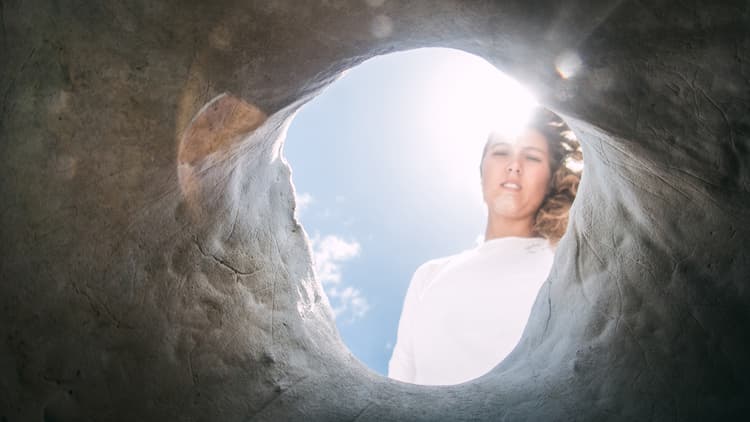
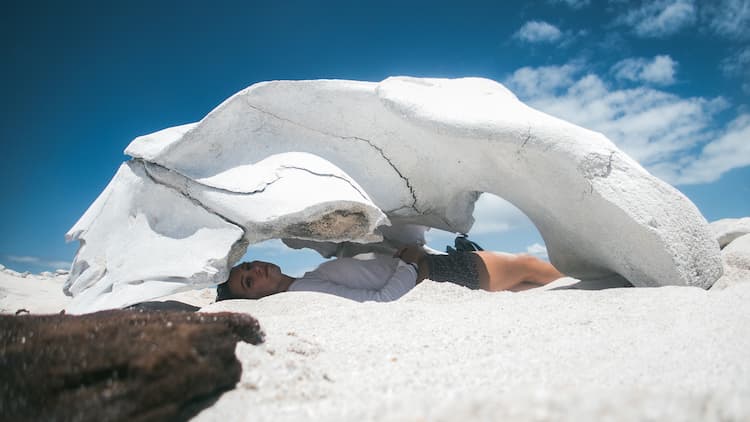
Like a kind of portal for time travel, flashes of my first swim with a whale started to return. I recalled the totality of the blue murk that had enveloped me, and the large distance between myself and the boulder-strewn coastline with its fringing kelp forest. I remembered how this feeling had brought me to a halt. The comfort of a certain and observable seafloor had been replaced by a seemingly infinite blue and I felt an overwhelming sense of vulnerability. A quick horizon scan revealed nothing but flat open seas and distant mountains following the curvature of False Bay. Despite no obvious cause for concern, the weight of vulnerability slowly built towards fear and doubt — a kind of force which seemed to pull me back towards the safety of the coast. I waited for my friend, Carina, who had been crazy enough to come with me. When she reached me, I could see by her wide-eyed expression that she too had been processing a similar internal conflict.
I was about to suggest turning back, but before I had the chance to express this, a sliver of blackness broke the otherwise still surface — its smooth, uninterrupted back identifying itself as a southern right whale. Fear dissolved into excitement as I put my head underwater, hoping to catch a glimpse of the whale. Through the haze, an indiscriminate, shadowy figure started to take shape, gradually sharpening as the distance shrank between us. In a strange moment of mental computation and adjustment, I suddenly realized that what I had taken to be the entire body of the whale, was in fact only its tail. I remembered coming to a stop, unable to move. I knew southern rights were big, but somehow, this fact had evaded me without the experience of my own relativity.
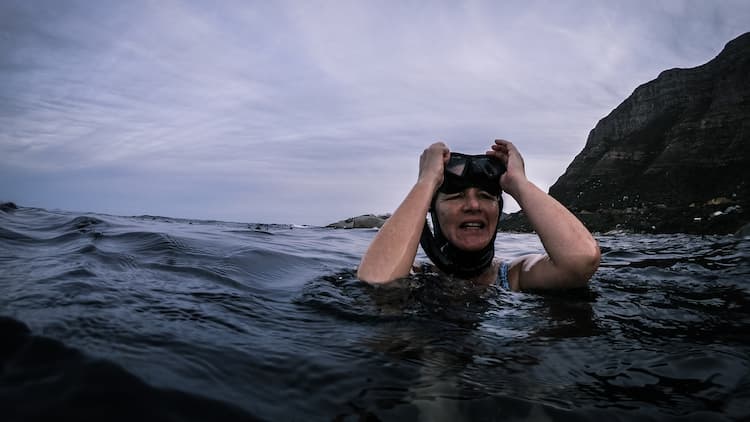
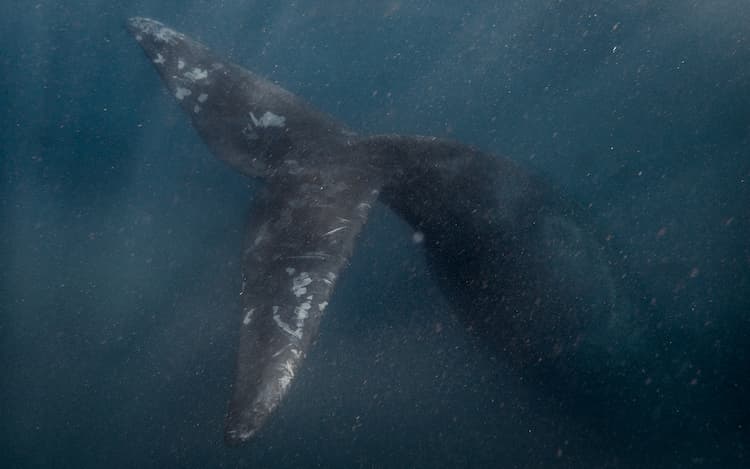
While we were initially still about 20 meters away from the whale, our temporary paralysis had distracted us from noticing that it had virtually covered the entire distance and had curiously come to investigate us. Only a meter away, it peered at us from a large, black eye. We both started kicking back to give the whale space, but even at our most intense pace, it was no use. It was intent on following us and, with absolutely no effort, matched our speed. In the back of my mind, I remembered something a friend had once said when describing whales and the power they had: “With the lightest brush, a whale could easily fracture one’s entire body.” I hadn’t really believed him but with a first-hand perspective of size, I felt my fragility as a butterfly might in the hands of a human.
A second southern right soon appeared from the murk, more or less the same size as the first. They started to move in unison around us with a gentleness and awareness that seemed to know our fragility. Several times I found myself within touching distance of the whales, but caution and reverence held me back from reaching further. The nebulous nature of memory made it hard for me to remember how long Carina and I spent with them. But then, time itself seemed to have become a distant concept. Suspended in the blue-green, we danced in the silhouettes of giants who were far more elegant and graceful than we could ever be. Even, as we parted, it seemed as if the moment continued. I recalled my dreams that night taking on a strange lucidity, like being witness to the most incredible three-dimensional projections as the two whales seemed to surround the sea of darkness around me.
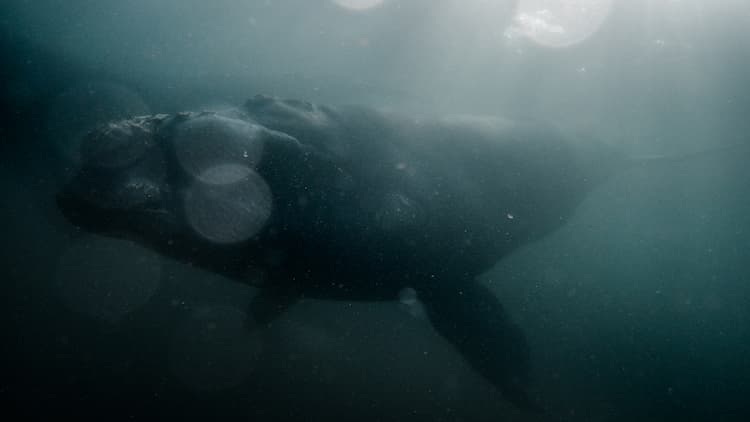
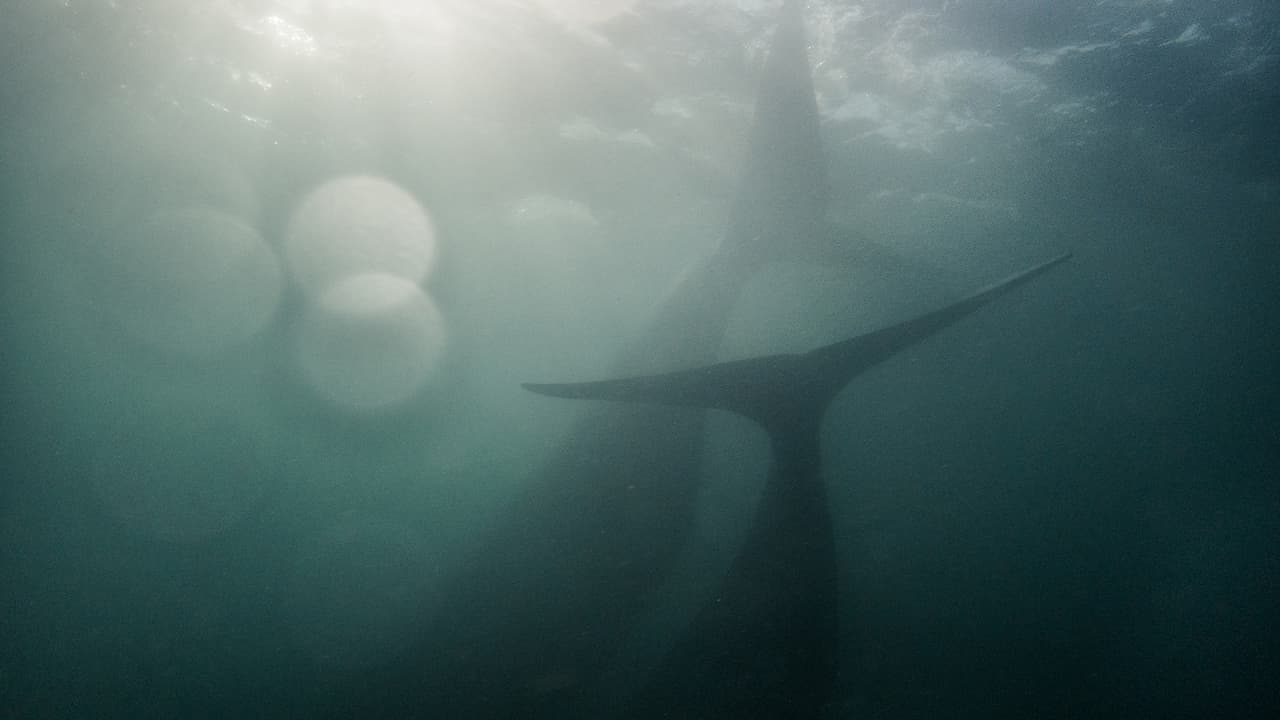
Shadowed in the hollow of the whale skull, I felt these memories of the past rippling through as I found my fingers absent-mindedly tracing the cracks and crevices above me. For a moment, everything felt distinct – my memories, the San people, the two southern rights, Carina, the whale skull, my fingers, the sand below me. And yet, when I searched for the distinction, I found that it didn’t exist. I was touching death, and it was touching me. It was as if the interface between life and death had just been revealed. There was no separation. The past etched into the crumbling bones are the sands of the future. And, when I searched for myself, I realized why it was meaningless.